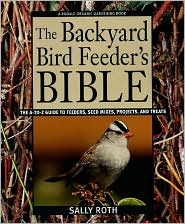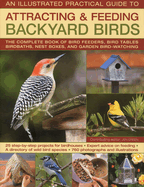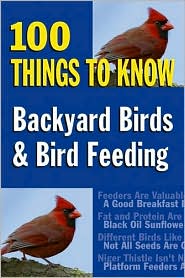 |
| Learn more |
You've probably seen his show on TV, where he visits people in suburbia and the inner-cities across America, helping them create a wildlife-friendly yard. His letter described three facts to keep in mind when selecting food for your bird feeders. Mizejewski brings up the point that as the weather turns cooler and food sources become scarcer, many birds will begin looking for supplemental food. Fall is a great time to :
 |
| Learn more |
Second, choose high-quality food. Birds actually assess potential food for nutritional content and quality. You may even catch them rattling individual seeds in their bills to weigh and taste them before deciding to eat them. In fact, birds discard low-quality food, and a food patch with consistently low-quality food may be avoided for a while.
Lastly, choose seeds that are easily handled and digested. For birds, eating is about nutrition and also consuming a lot of food quickly to avoiding predators. Research has shown that given a choice between cumbersome seeds or easily handled seeds, birds consistently choose the latter.
Thank you, David. Now, here's some additional facts about 5 seed varieties commonly used:
 |
| Learn more |
If you want to attract sparrows, jays, towhees, grouse, quail, blackbirds, ducks or wild turkeys, try cracked corn. It is a less expensive seed often used as filler in birdseed mixes, but its high carbohydrate content makes it suitable for a number of backyard birds, particularly for ground-feeding birds that may have larger appetites. Birds that often feed on grain or are common in agricultural areas may favor cracked corn. I scatter cracked corn on the ground and mix it in with mixed-bird seed, and the Mourning Doves love it! I've counted up to a dozen doves in my backyard, savoring this variety of bird food. Unfortunately, several of them fell to the talons of speedy Sharp-shin and Cooper's Hawks. But, that's nature's way. It was amazing to see these predators hiding in the cover of the dense fir tree in my backyard, before they attacked.
 |
| Learn more |
Millet attracts doves, sparrows, juncos, quail and buntings. They are small white seeds are a common component of birdseed mixes, but it can be purchased separately for individual feeding if desired. This seed is useful in hopper and tube feeders, as well as for sprinkling on the ground or in tray or platform feeders.
Safflower Seeds attract cardinals, nuthatches, jays, woodpeckers and house finches. It is a large, oval seed with a white shell that looks like a white sunflower seed, and has a thick shell, so only birds with sturdy bills to crack the seeds open can make good use of them. This is a popular seed choice in backyards where squirrels often raid feeders, because squirrels do not favor this seed as readily. I wrote an article "Squirrels, a pain in the arse, or an entertaining backyard clown...you decide". Quite frankly, althought the squirrels in my yard eat the bird seeds, I still enjoy them and their ability to counteract my anti-squirrel tactics!
 |
| Learn more |
Begin creating a wildlife-friendly yard, today!
